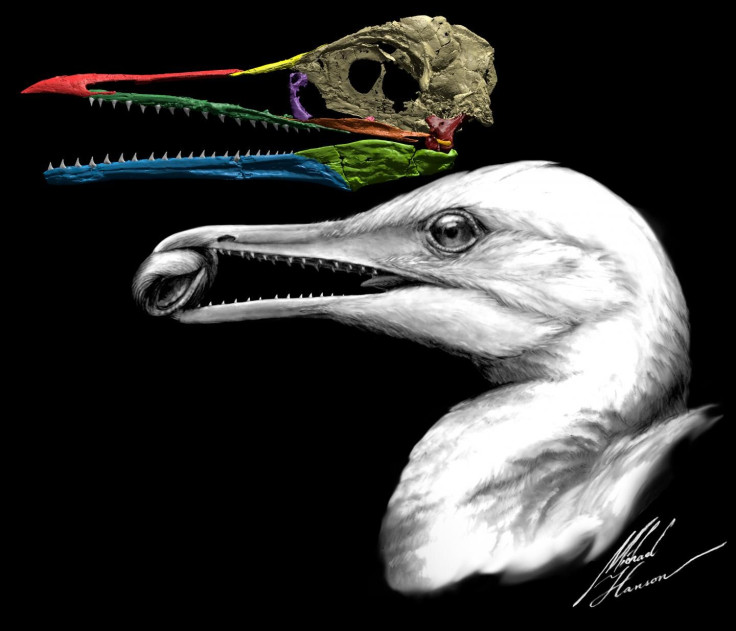Ichthyornis Dispar Shows What Bird Beaks First Looked Like
“The first beak was a horn-covered pincer tip at the end of the jaw. The remainder of the jaw was filled with teeth. At its origin, the beak was a precision grasping mechanism that served as a surrogate hand as the hands transformed into wings,” Bhart-Anjan Bhullar, a paleontologist from Yale University who was the principal investigator of a new study on a transformative species, said in a statement, describing what the earliest bird beaks looked like.
Ichthyornis dispar was a toothed bird that lived in the Late Cretaceous, about 100 million years ago, in present-day North America. It was at the center of the transformation from avian dinosaurs to modern-day birds, and its beak helps researchers understand the eventual formation of modern birds’ skulls, which are very different from their ancestors, the dinosaurs.
Bhullar, who is an assistant professor and assistant curator in geology and geophysics, added: “Right under our noses this whole time was an amazing, transitional bird. It has a modern-looking brain along with a remarkably dinosaurian jaw muscle configuration.”

The paper authored by Bhullar and his colleagues was based on the study of new specimens of Ichthyornis dispar, which included a complete skull of the primitive bird, as well as two pieces of the cranium that had been previously overlooked from the existing collection of fragments, discovered in the 1870s.
“The fossil record provides our only direct evidence of the evolutionary transformations that have given rise to modern forms. This extraordinary new specimen reveals the surprisingly late retention of dinosaur-like features in the skull of Ichthyornis — one of the closest-known relatives of modern birds from the Age of Reptiles,” Daniel Field of the Milner Centre for Evolution at the University of Bath, who was co-lead author on the study, said in the statement.
The Ichthyornis dispar beak suggests its brain was similar to that of modern birds, but the temporal region of the skull was much like what dinosaurs had. This indicates that the brain changed first as birds began to evolve, and that the skull, which was still dinosaur-like, followed after.
“Ichthyornis would have looked very similar to today’s seabirds, probably very much like a gull or tern. The teeth probably would not have been visible unless the mouth was open but covered with some sort of lip-like, extra-oral tissue,” Michael Hanson of Yale, another co-lead author, said in the statement.
“The story of the evolution of birds, the most species-rich group of vertebrates on land, is one of the most important in all of history. It is, after all, still the age of dinosaurs,” Bhullar said, referring to the fact that birds are sometimes referred to as the only extant dinosaurs.
Titled “Complete Ichthyornis skull illuminates mosaic assembly of the avian head,” the paper appeared online Wednesday in the journal Nature.
© Copyright IBTimes 2024. All rights reserved.





















